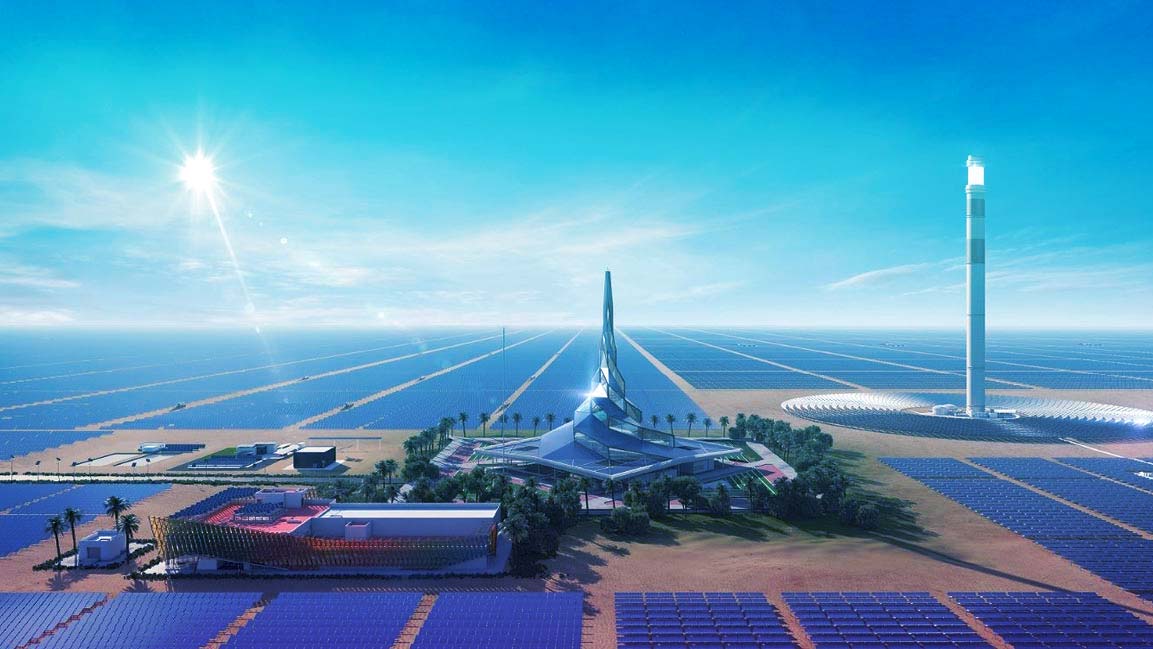As solar power continues to advance, the cost of solar energy production has been following a pattern remarkably similar to Moore’s Law. The concept of Moore’s Law, originally applied to the semiconductor industry, refers to the observation that the performance of technology tends to double approximately every two years, while its cost often decreases at a similar rate. In the context of solar energy, this “Moore’s Law of Solar Power” refers to the consistent and significant reduction in the cost of solar power generation, driven by economies of scale and technological improvements.
This article will explore how economies of scale lead to a decline in the marginal cost of solar power production, comparing it to the cost trajectory of traditional fossil fuel-based power generation, particularly coal and natural gas. We will also look at future trends and the potential for solar energy to become even more competitive in the energy sector.
The Economics of Solar Power: Marginal Cost Reduction through Economies of Scale
The ongoing reduction in solar power costs is a direct result of economies of scale, technological innovation, and more efficient manufacturing processes. As global demand for solar panels increases, manufacturers are able to produce them in larger quantities, leading to lower unit costs. This mass production not only reduces the cost of materials but also improves the efficiency of solar technology itself.
Over the past decade, the cost of solar photovoltaic (PV) modules has dropped by more than 80%, driven by both technological advancements and growing market competition. As the solar industry continues to scale, the cost of installation and maintenance is expected to decrease further, continuing the pattern of cost reduction that mirrors Moore’s Law in semiconductor production.
Furthermore, with advancements in energy storage technologies and improved grid integration, the cost per kilowatt-hour (kWh) of solar energy continues to fall. In regions with abundant sunlight, solar power has already reached “grid parity,” meaning that it is as cheap or cheaper than energy produced from fossil fuels.
Comparing Solar Power Costs with Fossil Fuels
When comparing the cost of solar power to that of traditional fossil fuel-based power generation, such as coal and natural gas, the difference is becoming increasingly apparent. Historically, fossil fuels were considered the cheaper option for energy production due to established infrastructure and the relatively low cost of fuel.
However, in recent years, the cost of solar power has become increasingly competitive. According to the International Renewable Energy Agency (IRENA), the levelized cost of electricity (LCOE) from solar has fallen by more than 70% since 2010, while the cost of coal and natural gas generation has remained relatively stable or increased. In some markets, solar power is now cheaper than new coal or natural gas plants.
The decline in solar power costs is expected to continue, while the costs of fossil fuels remain susceptible to volatile prices and environmental regulations. The long-term sustainability of fossil fuel power is increasingly being questioned, while solar energy is viewed as a cleaner and more economically viable solution for future energy needs.
The Future of Solar Power: A Growing Global Trend
Looking forward, the future of solar energy seems incredibly promising. As global efforts to reduce carbon emissions intensify, solar energy will continue to be a central part of the transition to clean, renewable energy. Technological breakthroughs in solar panel efficiency, such as bifacial panels and perovskite solar cells, are expected to further reduce costs and increase energy output.
In addition to technological innovations, policy incentives and government support for renewable energy adoption are playing a crucial role in driving the continued growth of the solar industry. In many regions, governments are implementing policies that encourage the deployment of solar energy systems, from residential rooftops to large-scale solar farms.
The continued decline in the cost of solar energy is expected to further accelerate its adoption across the globe. As economies of scale continue to take effect, solar power may not only become the dominant source of energy but could also pave the way for a future where solar energy is both abundant and affordable for all.
Conclusion: The Role of Solar Power in the Future Energy Landscape
The “Moore’s Law” effect in solar energy is reshaping the global energy landscape, making solar power more cost-competitive than ever before. As economies of scale drive costs down, and as technological advancements continue to improve efficiency, solar energy is set to become a cornerstone of the future energy mix. Its ability to compete with traditional fossil fuel-based power generation is rapidly becoming a reality, and its widespread adoption will play a critical role in the transition to a more sustainable and affordable energy future.
By continuing to innovate and scale, the solar industry is poised to deliver even lower costs and greater efficiency in the years to come, ensuring that solar power will be a key player in meeting the world’s growing energy needs while combating climate change. The future of energy is undeniably solar.
Author Profile
Latest entries
 Knowledge2025-01-08Perovskite Solar Cells: A Revolutionary Technology for the Future of Solar Energy
Knowledge2025-01-08Perovskite Solar Cells: A Revolutionary Technology for the Future of Solar Energy Knowledge2025-01-08The Moore’s Law of Solar Power: How Economies of Scale Drive Solar Energy Costs Down
Knowledge2025-01-08The Moore’s Law of Solar Power: How Economies of Scale Drive Solar Energy Costs Down Event2025-01-062025 World Battery & Energy Storage Industry Expo (WBE) – Join the Global Energy Revolution
Event2025-01-062025 World Battery & Energy Storage Industry Expo (WBE) – Join the Global Energy Revolution News2025-01-05Saudi Arabia’s Trillion Push for Clean Energy: China’s Role in the Transformation
News2025-01-05Saudi Arabia’s Trillion Push for Clean Energy: China’s Role in the Transformation



















